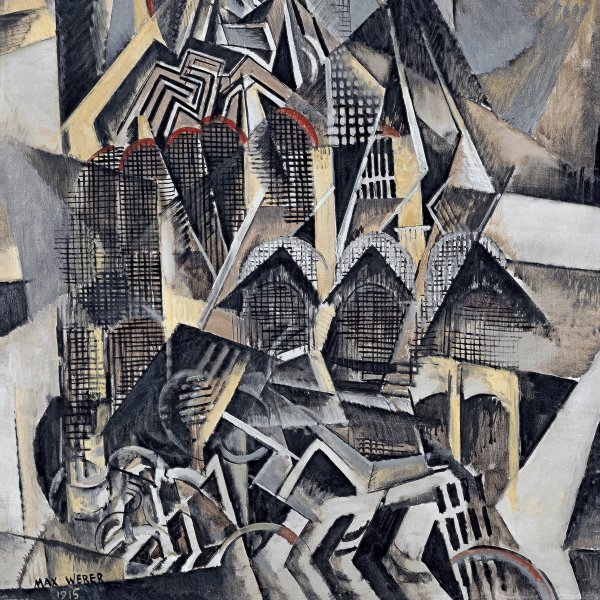Max Weber
The Russian-born painter Max Weber emigrated to the United States with his family in 1891. He studied under Arthur Wesley Dow at the Pratt Institute in Brooklyn from 1898 to 1900, and taught drawing at schools in Virginia and Minnesota. In 1905 he travelled to Paris with the intention of completing his artistic training. He attended the Académie Julian, studied under Henri Matisse, became acquainted with the work of Pablo Picasso and struck up a friendship with Henri Rousseau. At the time he also developed an interest in art of other periods during his travels to Spain, Italy and the Netherlands, and embraced the artistic expressions of other continents.
Weber returned to New York in 1909 and came into contact with Alfred Stieglitz, at whose gallery, 291, he organised an exhibition of the work of Le Douanier Rousseau in 1910. The following year the gallery exhibited Weber’s still lifes and nudes, which bore the imprint of his Paris years. His style was subsequently characterised by an eclectic combination of elements of Cubism and Futurism and a Fauvist palette. Many of his works from this period capture his impressions of life in the big city with its movement, rhythm and sounds.
Beginning in the early 1920s Weber’s painting became more introspective and centred on Jewish tradition. Around this time his interest waned in exploring the paths that had led him to abstraction and he again focused on studying the human figure. His last works executed from the 1940s onwards were infused with greater lyricism. Throughout his artistic career he also experimented with sculpture, engraving and the graphic arts.
Max Weber was one of the few American artists of his generation — which was pioneering in its interest in the new art — to set out his artistic ideas in writing. His essays can be read in Stieglitz’s Camera Work (1910) and under the title Essays on Art (1916). He also published two books of poetry: Cubist Poems in 1914, and Primitives: Poems and Woodcuts in 1926.





